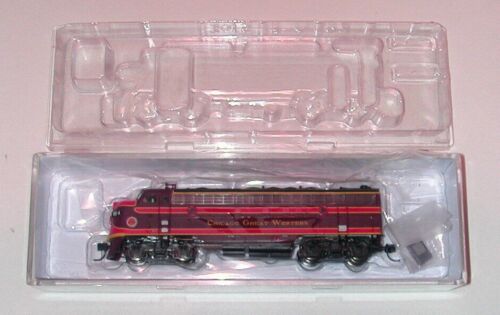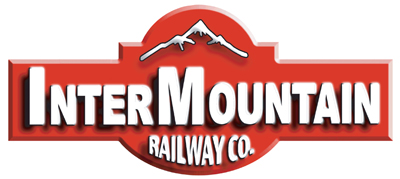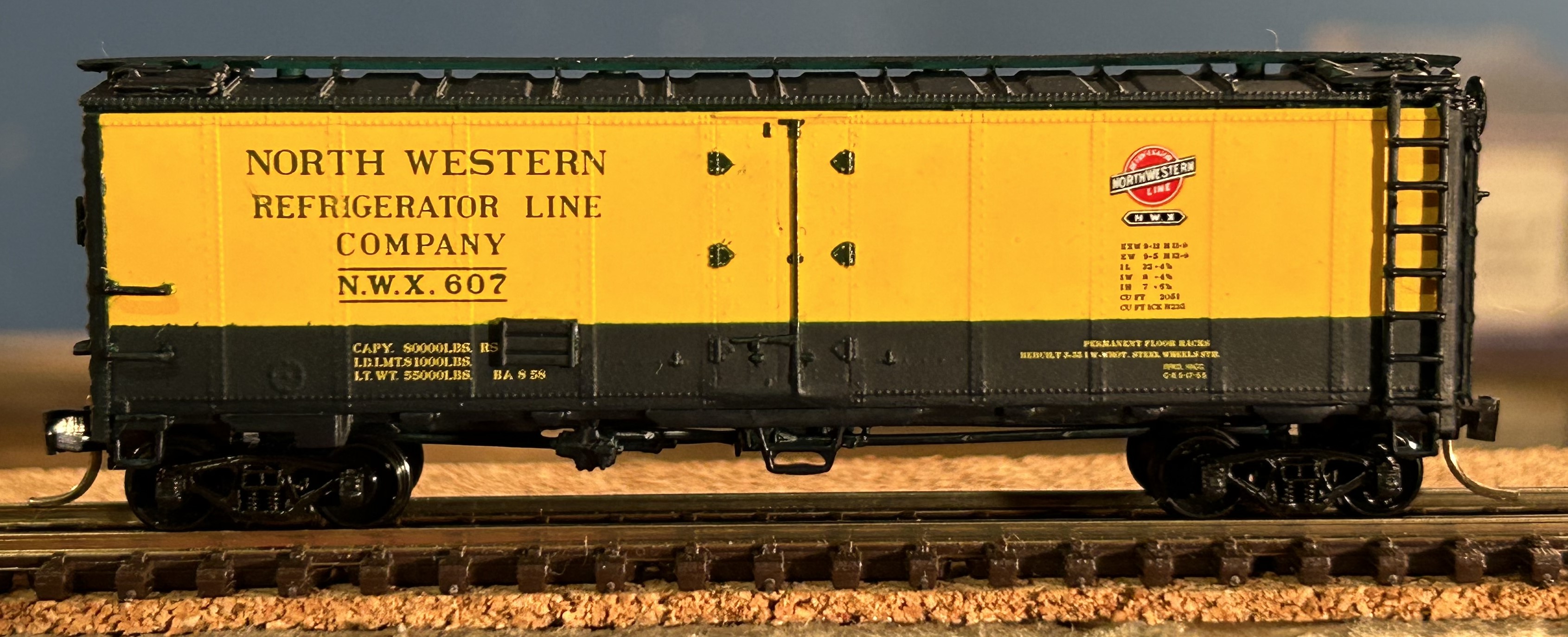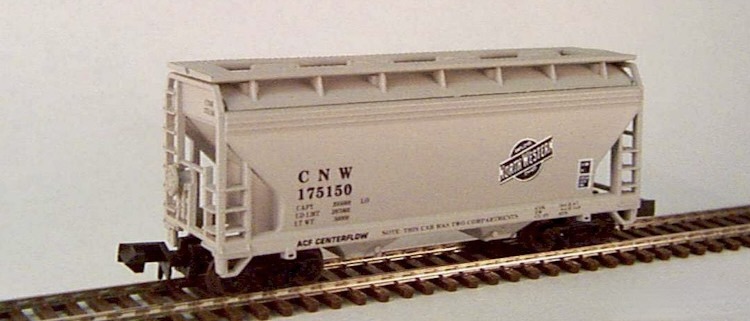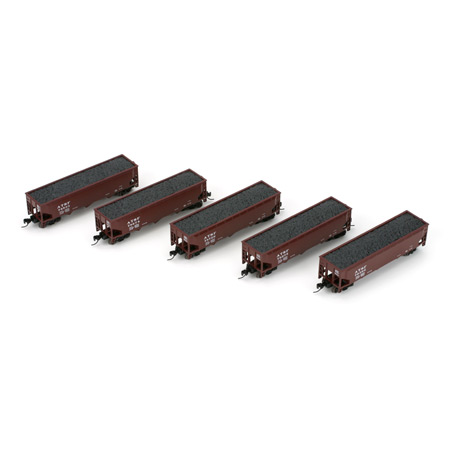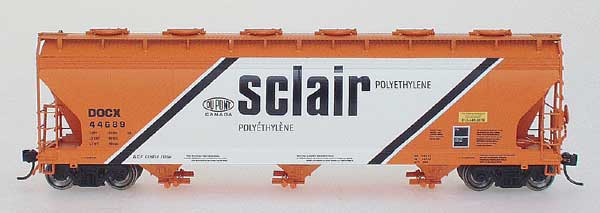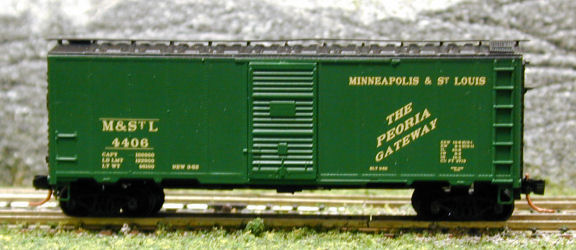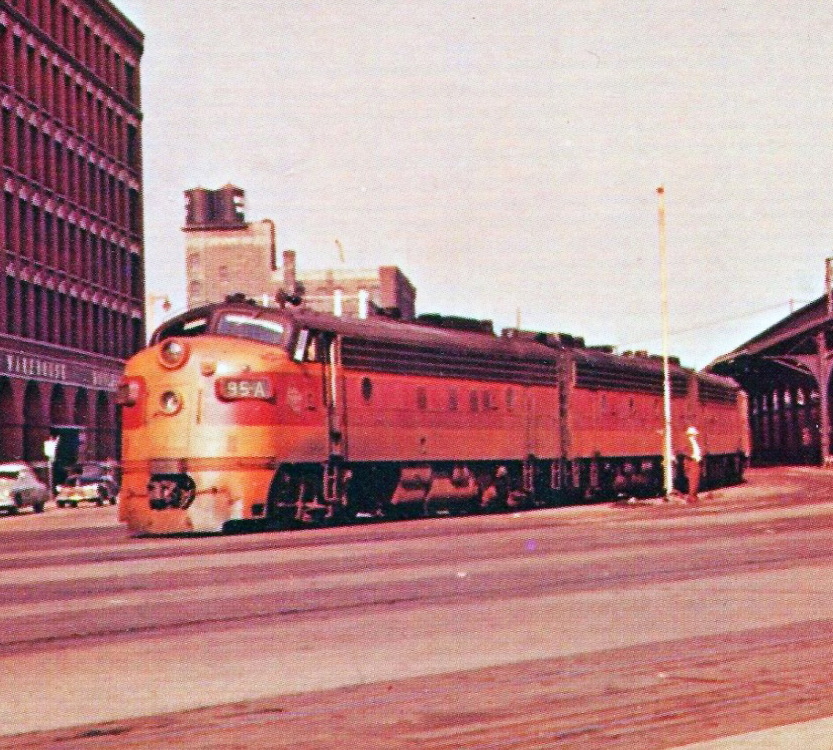Specific Item Information: Announcement page: https://www.intermountain-railway.com/n/nloco/nlocfP7.htm
Model Information:
Features of this model include (2023 run):
Features of this model include (2023 run):
- LED lighting - All lights separately controllable on DCC units.
- Upper nose MARS Light (where applicable)(single headlight units, upper nose light acts as the headlight)
- Lower Headlight (where applicable)
- Illuminated number boards
- Ditch Lights (DCC only)(No units factory equipped with ditch lights, however LEDs are provided for use by the modeler)
- Wire & Etched metal details
- Laser sharp painting and printing
- Micro-Trains compatible couplers
DCC Information:
The 2023 run is available in 3 versions:
The 2023 run is available in 3 versions:
- DC models equipped with a DC only circuit board and are DCC Ready.
- Non-Sound equipped with an ESU LokPilot 5 DCC decoder (stock number suffixed by letter D)
- Sound units equipped with an ESU LokSound 5 sound decoder. Real F7 locomotive recordings used for superior accuracy and quality! (stock number suffixed by letter S)
Prototype History: The EMD FP7 was a 1,500 horsepower (1,100 kW), B-B dual-service passenger and freight-hauling diesel locomotive produced between June 1949 and December 1953 by General Motors' Electro-Motive Division and General Motors Diesel. Final assembly was at GM-EMD's La Grange, Illinois plant, excepting locomotives destined for Canada, in which case final assembly was at GMD's plant in London, Ontario. The FP7 was essentially EMD's F7A locomotive extended by four feet to give greater water capacity for the steam generator for heating passenger trains.
While EMD's E-units were successful passenger engines, their A1A-A1A wheel arrangement made them less useful in mountainous terrain. Several railroads had tried EMD's F3 in passenger service, but there was insufficient water capacity in an A-unit fitted with dynamic brakes. The Atchison, Topeka and Santa Fe Railway's solution was to replace the steam generators in A-units with a water tank, and so only fitted steam generators into the B-units. The Northern Pacific Railway's solution was to fit extra water tanks into the first baggage car, and to pipe the water to the engines. The real breakthrough came when EMD recognized the problem and added the stretched FP7 to its catalog.
A total of 381 cab-equipped lead A units were built; unlike the freight series, no cables booster B units were sold. Regular F7B units were sometimes used with FP7 A units, since they, lacking cabs, had more room for water and steam generators. The FP7 and its successor, the FP9, were offshoots of GM-EMD's highly successful F-unit series of cab unit freight diesels.
F3s, F7s, and F9s equipped for passenger service are not FP-series locomotives, which although similar in appearance have distinctive differences, including but not limited to the greater body length. The extra 4 ft (1.2 m) of length was added behind the first body-side porthole, and can be recognised by the greater distance between that porthole and the first small carbody filter grille. The corresponding space beneath the body, behind the front truck, was also opened up; this either remained an empty space or was filled with a distinctive water tank shaped like a barrel mounted transversely.
Railroads found that Fs, with their better tractive effort performed much better than Es in passenger service on routes with stiff grades. However, as a freight model lacking steam generators it was not a possible unless a separate heating car was used or Es were in the consist. EMD corrected the issue with its FP7, released in the late 1940s, built at the same time as the F7. Surprisingly, for a variant model the locomotive sold quite well with nearly 400 examples manufactured (including those constructed by General Motors Diesel of London, Ontario). Today, numerous FP7s remain preserved and in operation around the country.
From Wikipedia
Read more on American-Rails.com
While EMD's E-units were successful passenger engines, their A1A-A1A wheel arrangement made them less useful in mountainous terrain. Several railroads had tried EMD's F3 in passenger service, but there was insufficient water capacity in an A-unit fitted with dynamic brakes. The Atchison, Topeka and Santa Fe Railway's solution was to replace the steam generators in A-units with a water tank, and so only fitted steam generators into the B-units. The Northern Pacific Railway's solution was to fit extra water tanks into the first baggage car, and to pipe the water to the engines. The real breakthrough came when EMD recognized the problem and added the stretched FP7 to its catalog.
A total of 381 cab-equipped lead A units were built; unlike the freight series, no cables booster B units were sold. Regular F7B units were sometimes used with FP7 A units, since they, lacking cabs, had more room for water and steam generators. The FP7 and its successor, the FP9, were offshoots of GM-EMD's highly successful F-unit series of cab unit freight diesels.
F3s, F7s, and F9s equipped for passenger service are not FP-series locomotives, which although similar in appearance have distinctive differences, including but not limited to the greater body length. The extra 4 ft (1.2 m) of length was added behind the first body-side porthole, and can be recognised by the greater distance between that porthole and the first small carbody filter grille. The corresponding space beneath the body, behind the front truck, was also opened up; this either remained an empty space or was filled with a distinctive water tank shaped like a barrel mounted transversely.
Railroads found that Fs, with their better tractive effort performed much better than Es in passenger service on routes with stiff grades. However, as a freight model lacking steam generators it was not a possible unless a separate heating car was used or Es were in the consist. EMD corrected the issue with its FP7, released in the late 1940s, built at the same time as the F7. Surprisingly, for a variant model the locomotive sold quite well with nearly 400 examples manufactured (including those constructed by General Motors Diesel of London, Ontario). Today, numerous FP7s remain preserved and in operation around the country.
From Wikipedia
Read more on American-Rails.com
Road Name History: 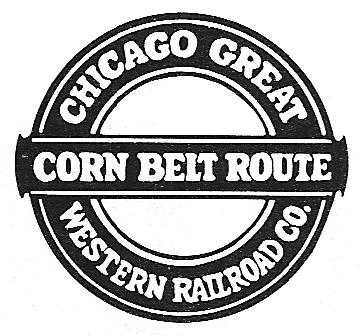 Chicago Great Western was the result of the 1892 reorganization of the Chicago St. Paul & Kansas City. By 1903, the CGW had grown to its maximum size. The CGW had a vaguely cross-shaped system map. The east-west leg started in Chicago and linked Dubuque, Fort Dodge (both in Iowa) and finally Omaha, Nebraska. The north-south line started in St. Paul, Minnesota and linked Waterloo and Des Moines, Iowa then St. Joseph and Kansas City, Missouri. Each axis consisted of a big arc which put CGW at a distance disadvantage to most other railroads servicing the same region – and there were a lot of railroads in the area.
Chicago Great Western was the result of the 1892 reorganization of the Chicago St. Paul & Kansas City. By 1903, the CGW had grown to its maximum size. The CGW had a vaguely cross-shaped system map. The east-west leg started in Chicago and linked Dubuque, Fort Dodge (both in Iowa) and finally Omaha, Nebraska. The north-south line started in St. Paul, Minnesota and linked Waterloo and Des Moines, Iowa then St. Joseph and Kansas City, Missouri. Each axis consisted of a big arc which put CGW at a distance disadvantage to most other railroads servicing the same region – and there were a lot of railroads in the area.
Passenger service was never a major priority and many trains consisted of doodlebugs and trailers even before World War One. In the 1920s CGW did team up with Santa Fe to run through sleepers from the Twin Cities to Los Angeles.
Big mainline power in the 30s and 40s consisted of a fleet of 3 dozen 2-10-4s. In 1936, CGW launched piggyback service – one of the first in the nation. One piggyback customer was a truck line specializing in hauling steel. Since CGW charged by the trailer, the truck line would take the contents of 3 trailers which had maxed out on highway weight and reload all the steel into a single catastrophically heavy trailer that would ride the flat car. They didn’t tell CGW though. No one was the wiser until the landing gear on a trailer punched through the deck of the flat car and derailed a train at speed!
By 1950, CGW had completely dieselized with a mix of Alco, Baldwin and EMD switchers, Alco and EMD road switchers (the former running long hood forward and the latter equipped with dual controls,) and a sizable fleet of EMD F units. By this time, the Deramus family (who already controlled the Kansas City Southern) had gained control of the CGW. Over the years, they cut costs and services. CGW began holding trains until they reached maximum tonnage. Trains between 150 and 250 cars were a daily occurrance behind A-B-B-B-B-A sets of F units. What’s more, these monsters would stop and switch along the way!
Around 1951, they dropped “The Corn Belt Route” logo in favor of the Lucky Strike style logo. The first generation of diesels were delivered in ornate maroon, and red with yellow striping. This was replaced with a simplified solid maroon and then red with black roof (which was essentially the same as neighbor and fellow Deramus controlled Kansas City Southern.) The second generation of diesels consisted entirely of GP30’s and SD40’s.
Despite the iffy service and tremendous competition in the area, and thanks to the cost cutting and a dearth of money losing passenger operations that plagued their neighbors, CGW steadily made money through the 50s and 60s. But, in the age of mergers, it was clear they couldn’t make it on their own. CGW discussed merger with every possible connection but ultimately merged into Chicago & North Western in 1968. In their last full year, the CGW was a 1,411 mile line with 139 locomotives (for comparison, they were about the same size as Western Pacific.)

Passenger service was never a major priority and many trains consisted of doodlebugs and trailers even before World War One. In the 1920s CGW did team up with Santa Fe to run through sleepers from the Twin Cities to Los Angeles.
Big mainline power in the 30s and 40s consisted of a fleet of 3 dozen 2-10-4s. In 1936, CGW launched piggyback service – one of the first in the nation. One piggyback customer was a truck line specializing in hauling steel. Since CGW charged by the trailer, the truck line would take the contents of 3 trailers which had maxed out on highway weight and reload all the steel into a single catastrophically heavy trailer that would ride the flat car. They didn’t tell CGW though. No one was the wiser until the landing gear on a trailer punched through the deck of the flat car and derailed a train at speed!
By 1950, CGW had completely dieselized with a mix of Alco, Baldwin and EMD switchers, Alco and EMD road switchers (the former running long hood forward and the latter equipped with dual controls,) and a sizable fleet of EMD F units. By this time, the Deramus family (who already controlled the Kansas City Southern) had gained control of the CGW. Over the years, they cut costs and services. CGW began holding trains until they reached maximum tonnage. Trains between 150 and 250 cars were a daily occurrance behind A-B-B-B-B-A sets of F units. What’s more, these monsters would stop and switch along the way!
Around 1951, they dropped “The Corn Belt Route” logo in favor of the Lucky Strike style logo. The first generation of diesels were delivered in ornate maroon, and red with yellow striping. This was replaced with a simplified solid maroon and then red with black roof (which was essentially the same as neighbor and fellow Deramus controlled Kansas City Southern.) The second generation of diesels consisted entirely of GP30’s and SD40’s.
Despite the iffy service and tremendous competition in the area, and thanks to the cost cutting and a dearth of money losing passenger operations that plagued their neighbors, CGW steadily made money through the 50s and 60s. But, in the age of mergers, it was clear they couldn’t make it on their own. CGW discussed merger with every possible connection but ultimately merged into Chicago & North Western in 1968. In their last full year, the CGW was a 1,411 mile line with 139 locomotives (for comparison, they were about the same size as Western Pacific.)
Brand/Importer Information: InterMountain was founded in 1985 by Fred Brummet. They got started in the model railroad business by producing O-Scale model kits. They got started in the N Scale business almost a decade later when in 1994 they introduced the 40-23 reefer car in kit form. Later, in 1998, they started producing RTR (Ready-to-Run) models. By the early 2000s, InterMountain phased out kit production in favor of the RTR models.
The InterMountain Railway company is located at 1224 Boston Ave in Longmont, CO. They are a manufacturer of HO, N and Z scale model trains. They have produced kits as well as RTR (Ready-To-Run) models. Their N Scale products include locomotives as well as rolling stock. Their rolling stock lineup includes Boxcars, Hoppers, Tank Cars, Reefers, Gondolas, Stock Cars and Flatcars.
Their locomotive releases have primarily been diesel units, with the one major exception being their series of AC-12 Cab Forward steam locos. Their diesel lineup includes F3's, F7's, F9's, SD40's, SD45's and FT units. They are known for quality and detail. They also release their rolling stock in larger varieties of road numbers than most of the other manufacturers.
The InterMountain Railway company is located at 1224 Boston Ave in Longmont, CO. They are a manufacturer of HO, N and Z scale model trains. They have produced kits as well as RTR (Ready-To-Run) models. Their N Scale products include locomotives as well as rolling stock. Their rolling stock lineup includes Boxcars, Hoppers, Tank Cars, Reefers, Gondolas, Stock Cars and Flatcars.
Their locomotive releases have primarily been diesel units, with the one major exception being their series of AC-12 Cab Forward steam locos. Their diesel lineup includes F3's, F7's, F9's, SD40's, SD45's and FT units. They are known for quality and detail. They also release their rolling stock in larger varieties of road numbers than most of the other manufacturers.
Item created by: dennis.kamper on 2022-08-25 04:18:41. Last edited by dennis.kamper on 2023-03-15 06:37:57
If you see errors or missing data in this entry, please feel free to log in and edit it. Anyone with a Gmail account can log in instantly.
If you see errors or missing data in this entry, please feel free to log in and edit it. Anyone with a Gmail account can log in instantly.


